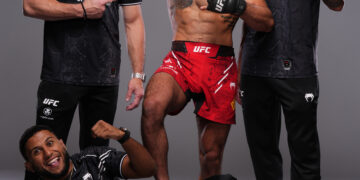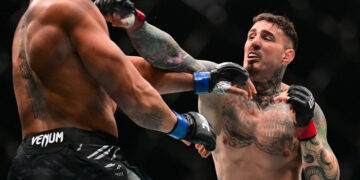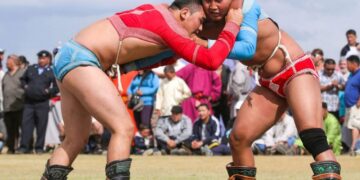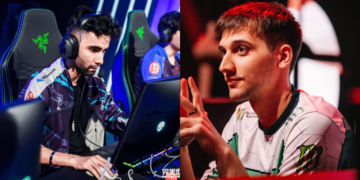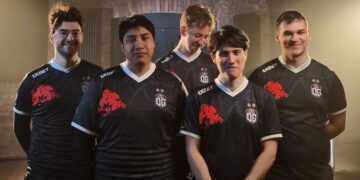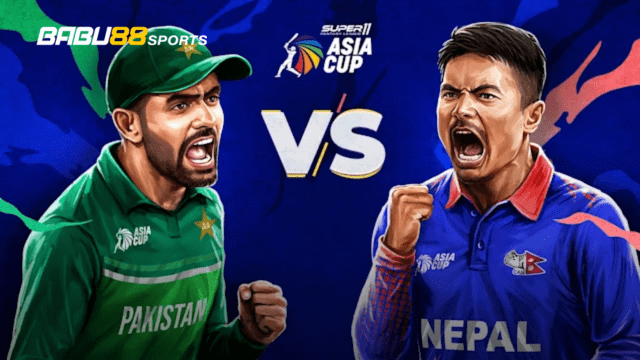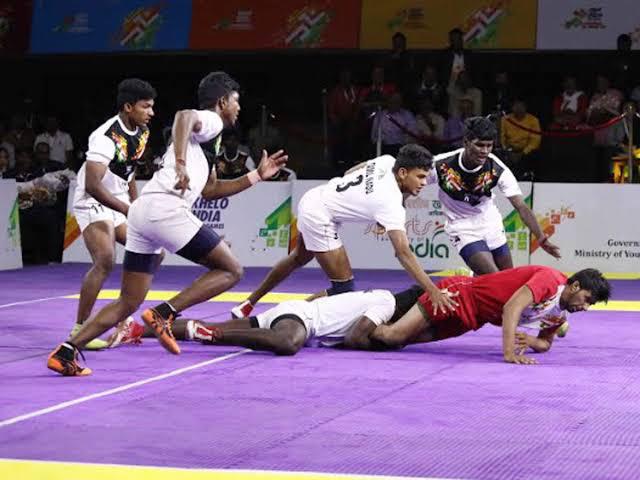
The term “smesh” became globally popular thanks to MMA superstar Khabib Nurmagomedov, but there’s much more to this than just a catchy quote. Behind it lies a brutal, relentless, and highly effective grappling system deeply rooted in Russian combat sports culture. Known for producing dominant champions across various martial arts, Russia has carved out a reputation for cultivating athletes who overpower their opponents with calculated aggression, solid fundamentals, and mental toughness. Let’s dive into what makes Russian-style grappling so special and what we can learn from it.
Russia And Martial Arts
Russia has a long and storied history in martial arts. Its influence spans both traditional combat systems and modern competitive formats. Unlike many countries that tend to specialize in one or two disciplines, Russia embraced a broad spectrum of fighting styles, including wrestling, Judo, boxing, and Sambo.
Sambo, in particular, is Russia’s most iconic martial art. Developed in the early 20th century by the Soviet military, Sambo combines elements of Judo and wrestling with its own unique flair. It was designed to be practical and efficient for real combat situations, and it later evolved into both a sport and a self-defense system. Russia’s emphasis on martial arts as a tool for physical, mental, and national development helped build the foundation for a dominant presence in global competition.
A Nation Filled With Dominant Champions
Russian athletes have left a massive mark on the world stage across multiple martial arts. In boxing, legends like Kostya Tszyu and Artur Beterbiev have displayed the power and discipline that Russian training instills. In Judo, the country consistently ranks among the top nations in world championships and the Olympics, producing stars like Tagir Khaybulaev and Mansur Isaev.
In wrestling, Russia is an undeniable powerhouse. Their Greco-Roman and freestyle wrestlers have dominated Olympic podiums for decades. Aleksandr Karelin, a three-time Olympic gold medalist and nine-time world champion, is widely considered the most dominant Greco-Roman wrestler in history. He famously went unbeaten for 13 years.
Then there’s Sambo, where Russian athletes regularly sweep international competitions. Sambo has also become a major pipeline for MMA, contributing to the rise of legends like Khabib Nurmagomedov and Fedor Emelianenko, who brought Russian-style grappling to global audiences in unforgettable fashion.
A Relentless Pursuit Of Excellence
What separates Russian fighters from many others is their mindset. From a young age, athletes are taught to embrace discomfort, focus on fundamentals, and push themselves beyond their limits. There’s a deep cultural emphasis on resilience and mastery. Russian grappling is not just about brute strength or speed. It’s about perfecting technique, applying constant pressure, and breaking the will of the opponent.
The phrase “smesh” embodies this perfectly. It isn’t about reckless aggression. It’s controlled destruction. The Russian style wears opponents down through a combination of top pressure, relentless takedowns, seamless transitions, and suffocating control. When executed well, it leaves no room for escape.
Training The Russian Way
Russian training camps are known for their intensity and discipline. Training is rigorous, consistent, and often grueling. Athletes drill techniques thousands of times, with a strong focus on conditioning and mental toughness. Coaches push their students to develop versatility, ensuring they can adapt to different situations and opponents.
In grappling-specific sports like Sambo and wrestling, athletes spend countless hours on takedowns, positional dominance, and control. Live sparring and situational drills are key elements of every training session. There is also a strong emphasis on sambo-style throws, leg locks, and chain wrestling.
Beyond physical training, there’s also a unique culture of humility and respect. Russian fighters often train in Spartan environments where ego has no place. It’s all about hard work, team loyalty, and earning your place through performance.
Notable Athletes And Champions
When discussing Russian grappling, several notable names stand out. Here are a couple of names that we’d like to highlight.
1) Fedor Emelianenko
An absolute legend in MMA, Fedor was known for his strong composure, explosive power, and seamless transitions between striking and grappling. A master of Sambo, Judo, and boxing, he became PRIDE’s most feared heavyweight and paved the way for future Russian fighters in MMA.
2) Khabib Nurmagomedov
Undefeated throughout his career, Khabib made grappling his signature weapon. His Dagestani wrestling, combined with Sambo and Judo, turned the octagon into his playground. Once he got hold of an opponent, there was no escape. His pressure, control, and timing were unmatched.
3) Aleksandr Karelin
Possibly the most feared wrestler of all time, Karelin was known for his raw strength, flawless technique, and dominance. His signature move, the reverse body lift, involved hoisting grown men into the air and slamming them with precision. He set the gold standard for what Russian wrestling could achieve.
4) Islam Makhachev
A superstar of modern MMA and a student of Khabib’s team, Islam represents the evolving face of Russian grappling in MMA. Combining crushing top control with well-rounded striking, Islam continues the legacy of dominance built on disciplined, high-level grappling.
Things We Can Learn
There’s a lot that martial artists and grapplers can learn from the Russian approach. First, consistency in drilling and conditioning leads to mastery. Russian athletes don’t chase flashy moves. They build strong foundations and repeat them until they become second nature.
Second, they approach grappling like a puzzle. They don’t just overpower opponents; they outthink them. Position, pressure, timing, and transitions are all carefully calculated. This mental aspect of grappling is just as important as the physical.
Finally, they embody humility in training. The work is more important than the recognition. The mat is a place to grow, not to show off.
Other Considerations
It’s worth noting that not all elements of Russian training may be appropriate or accessible to everyone. Some of the intensity and volume in their training systems can lead to burnout or injury if not managed well. Also, cultural differences and coaching styles can vary widely. What works in a Russian training camp might need to be adjusted depending on the athlete’s background and goals.
Conclusion
The Russian style of grappling is more than just a set of techniques. It’s a mindset, a culture, and a system built over decades of elite-level performance. Whether you are training for competition, self-defense, or personal growth, there’s something to learn from the Russians’ relentless commitment to excellence.
You may also like:
Fighting At A Distance: How To Set Up Your Punches Against Smaller Opponents
High-intensity interval training (HIIT) alternates all-out efforts with brief rest or low-intensity periods. Unlike steady-state cardio, HIIT exercises, martial arts such as Muay Thai, and some aspects of BJJ, pushes you into anaerobic zones. Think…
Feeling a little anxious heading into your first sparring session in martial arts is perfectly normal. You’ve never had the chance to test your skills against resisting opponents, and you’re unsure about how well you’ll…
In striking arts, size and reach are important tools, but they don’t guarantee success. When facing a smaller opponent, the challenge often lies in their speed, mobility, and ability to slip into range before you…
Head shots lead to some of the most amazing finishes in combat sports such as Boxing, Muay Thai, or Mixed Martial Arts, but body shots accomplish the same goal in a subtler way. A well-executed…
Have you ever watched the fight winner declared and thought, “Wait… how did they win that?” Welcome to the sneaky, strategic, and often misunderstood world of stealing rounds. It’s not cheating. It’s not luck. It’s…
You’ve probably seen Floyd Mayweather slip punches in a boxing match like he’s Neo in the Matrix as he hands out boxing clinics. The Philly shell is the foundation of Mayweather’s airtight defense, rarely leaving…
Along with its rich cultural heritage, Brazil is one of the most respected countries in grappling and is widely regarded as a powerhouse. Creating its own identity, Brazil’s distinctive approach to fighting has shaped what…
Tennis balls aren’t just for tennis players. They’re also a valuable tool for boxers looking to enhance their agility, coordination, and reflexes. Incorporating tennis ball drills into your boxing training regimen can significantly improve your…
Teen Muay Thai sensation Johan Ghazali may be facing adversity, but his journey is far from over. Here’s why his youth, talent, and experience in the world’s toughest arena means that his comeback could be…
Finding the ultimate cardio activity can make training feel like the best part of your day, instead of being just another box to check in your daily calendar. You love a good sweat session, but…
In Singapore, modern life often means spending hours sitting in a chair on most days. Working at your desk, commuting on the MRT, and streaming marathons all add up to a whole lot of sitting,…
In Brazilian Jiu-Jitsu and Submission Grappling, solo grappling drills help to keep your skills razor-sharp even on days you don’t have anyone to roll around on the ground with. These exercises allow you to get…





